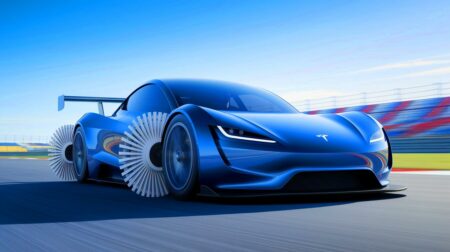| IN A NUTSHELL |
|
The global transition towards renewable energy is a critical endeavor in the fight against climate change. While solar and wind energy are at the forefront of this movement, they bring the challenge of intermittency, producing energy irregularly based on weather conditions. This necessitates the development of efficient storage solutions to ensure a continuous power supply. Currently, lithium-ion batteries dominate the market, but they have significant drawbacks. Enter gravitational batteries, a promising alternative with the potential to revolutionize energy storage.
Understanding Gravitational Batteries
Gravitational batteries harness one of nature’s fundamental forces: gravity. The concept is straightforward: energy is used to lift a mass, storing it as potential energy. When the mass descends, this potential energy converts into kinetic energy, which can be transformed into electricity via a generator or turbine. Unlike chemical batteries, gravitational potential energy does not degrade over time.
This technology builds on the principles of pumped hydroelectric storage, which dates back to 1907 in Switzerland. Today, advancements enable the lifting of solid blocks, removing constraints related to water resources or terrain characteristics. Achieving a record efficiency of up to 94%, these innovative systems promise to reshape the global energy landscape. With mechanical components that can function indefinitely, gravitational batteries offer a sustainable and long-lasting solution.
EVx: A 394-Foot Technological Marvel
Developed in collaboration with Swiss company Energy Vault, China’s EVx project exemplifies the rise of gravitational batteries. This towering structure, standing at 394 feet, can lift blocks weighing up to 53,000 pounds. During periods of excess energy, these blocks are elevated, storing energy that can be released when electricity demand increases.
With a cycle efficiency exceeding 80%, EVx boasts a total capacity of 100 megawatt-hours. Beyond performance, the project offers environmental and social benefits. Each block is constructed from locally available materials, such as sand and recycled waste, reducing reliance on rare minerals. The project’s construction has also utilized local resources, supporting local employment. Similar projects are planned, particularly in the southern regions of Mongolia.
Economic and Strategic Implications
Despite the potential of gravitational batteries, a paradox remains. China, which controls 72% of the global lithium-ion battery market, is investing in these new technologies. This raises strategic questions, as the popularity of gravitational batteries could lead some countries to bypass the predominantly China-controlled lithium-ion network.
This shift could result in significant economic changes, altering power dynamics among countries producing energy storage technologies. Transitioning to more sustainable storage solutions independent of rare resources could transform the global energy landscape. The move towards gravitational batteries may redefine geopolitical relationships, with countries seeking to adopt these innovative technologies.
Comparison: Lithium-Ion vs. Gravitational Batteries
| Feature | Lithium-Ion Batteries | Gravitational Batteries |
|---|---|---|
| Type of Energy | Chemical | Gravitational |
| Durability | Degrades Over Time | Does Not Degrade |
| Environmental Impact | Harmful Extraction | Made from Local Materials |
| Resource Dependence | Rare Minerals | Abundant Materials |
The shift to renewable energy demands innovative, sustainable storage solutions. Gravitational batteries present a viable alternative to lithium-ion batteries, offering environmental and economic advantages. These technologies have the potential not only to reshape the energy landscape but also to redefine geopolitical dynamics. Will countries be ready to embrace these new technologies and break free from dependence on rare resources?
Did you like it? 4.5/5 (22)








Wow, 50 Eiffel Towers? That’s one heavy battery! 📏